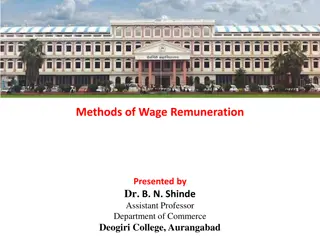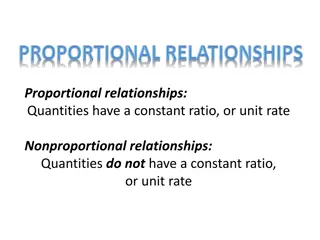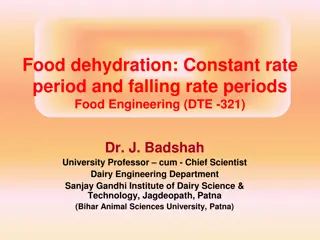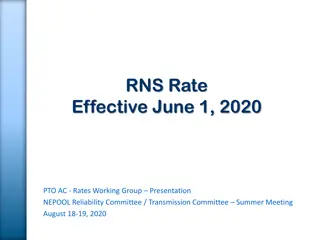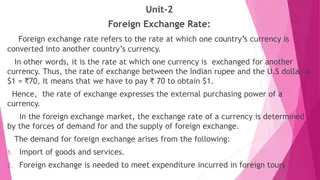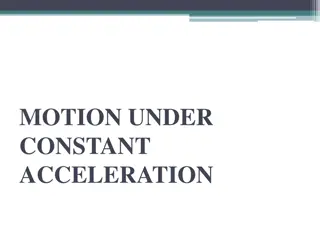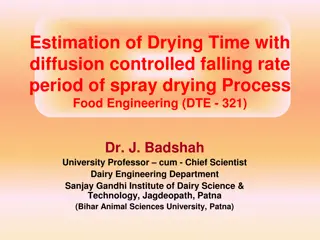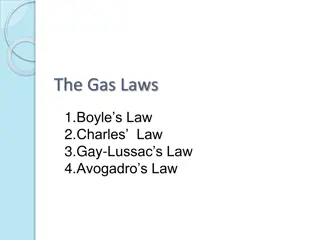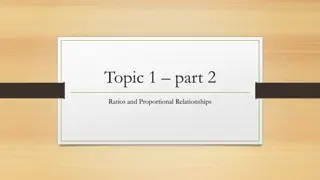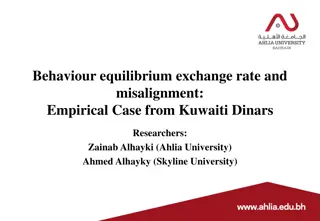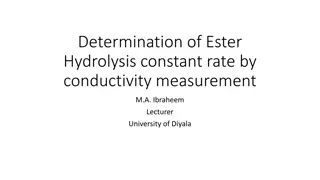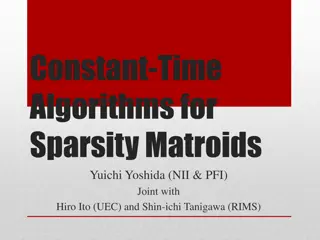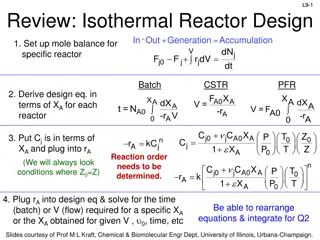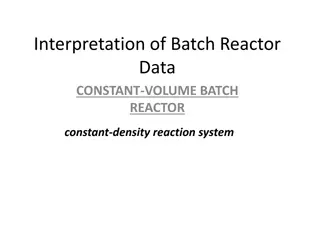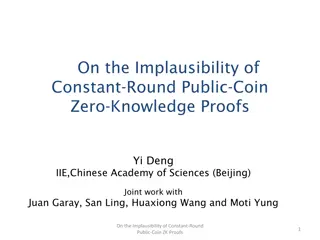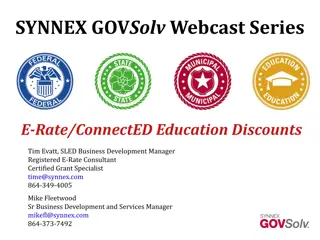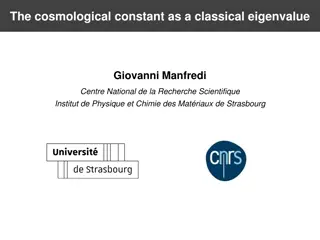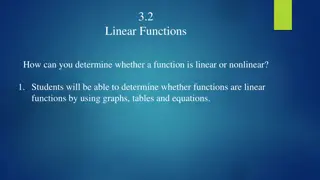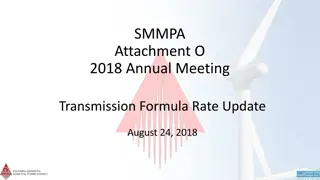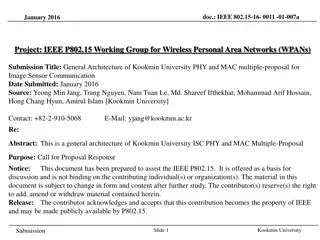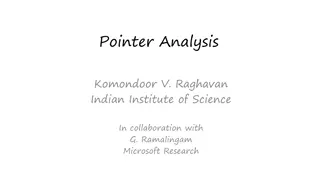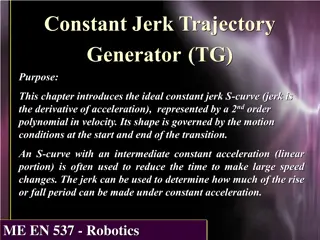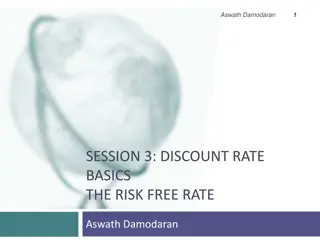Managing Interest Rate and Currency Risks: Strategies and Considerations
Interest rate and currency swaps are powerful tools for managing interest rate and foreign exchange risks. Firms face interest rate risk due to debt service obligations and holding interest-sensitive securities. Treasury management is key in balancing risk and return, with strategies based on expect
8 views • 21 slides
Improving Heat Rate Efficiency at Illinois Coal-Fired Power Plants
Heat rate improvements at coal-fired power plants in Illinois are crucial for enhancing energy conversion efficiency, reducing carbon intensity, and minimizing pollution. By increasing the heat rate/efficiency by 6%, these plants can generate more electricity while burning the same amount of coal. T
3 views • 11 slides
Wage Remuneration Methods Overview
Dr. B. N. Shinde, Assistant Professor at Deogiri College, Aurangabad, presents an insightful overview of methods of wage remuneration including Time Rate System, Piece Rate System, and Combination of Time and Piece Rate System. Time Rate System is the oldest method where workers are paid based on ti
3 views • 16 slides
Proportional and Nonproportional Relationships in Mathematics
Proportional relationships involve quantities having a constant ratio or unit rate, while nonproportional relationships lack this constant ratio. By examining examples such as earnings from babysitting and costs of movie rentals, we can grasp the differences between these two types of relationships.
2 views • 6 slides
Food Dehydration: Constant vs. Falling Rate Periods
Food dehydration involves constant rate periods where moisture evaporates uniformly until a critical point is reached, and then transitions to falling rate periods where drying slows down. Various drying methods and characteristics of air play crucial roles in this process, impacting the efficiency
1 views • 9 slides
Transmission Rate Change Overview for June 1, 2020
Presentation on the Rate Change effective June 1, 2020, detailing RNS Rate adjustments, Annual Transmission Revenue Requirements, and Regional Forecasts. The RNS Rate increased to $129.26/kW-year reflecting transmission project impacts, while ATRR analysis showed changes in revenue requirements for
0 views • 25 slides
Foreign Exchange Rates and Market Forces
Foreign exchange rate is the rate at which one country's currency is converted into another's, reflecting purchasing power. The rate is determined by demand and supply in the foreign exchange market, influenced by factors like imports, exports, investments, and speculation. Equilibrium rate is reach
2 views • 42 slides
Data Rate Limits in Data Communications
Data rate limits in data communications are crucial for determining how fast data can be transmitted over a channel. Factors such as available bandwidth, signal levels, and channel quality influence data rate. Nyquist and Shannon's theoretical formulas help calculate data rate for noiseless and nois
3 views • 4 slides
Motion Under Constant Acceleration
Constant acceleration refers to motion where the speed increases by the same amount each second. It is exemplified in scenarios like free fall due to gravity, where objects experience a consistent acceleration of approximately 10 meters per second squared. This type of motion plays a significant rol
4 views • 11 slides
Heart Rate Variations During Rest and Exercise
This experiment focuses on measuring heart rate at rest and after physical exercise, exploring the factors that influence heart rate changes. Through hands-on activities and theoretical lessons, students learn about the cardiac cycle, the circulatory system, and the impact of physical exertion on he
4 views • 22 slides
Estimation of Drying Time in Spray Drying Process: Diffusion and Falling Rate Periods
The estimation of drying time in a spray drying process involves understanding diffusion-controlled falling rate periods, constant rate periods, and the mechanisms by which moisture moves within the solid. The drying rate curves depend on factors like momentum, heat and mass transfer, physical prope
1 views • 8 slides
Gas Laws: Boyle's, Charles', Gay-Lussac's, and Avogadro's Laws
Gas laws such as Boyle's Law, Charles' Law, Gay-Lussac's Law, and Avogadro's Law govern the behavior of gases under different conditions. Boyle's Law relates pressure and volume at constant temperature, Charles' Law relates volume and temperature at constant pressure, Gay-Lussac's Law relates pressu
1 views • 19 slides
Ratios, Proportional Relationships, and Slope in Math
Explore the concepts of ratios, proportional relationships, constant rate of change, and slope in mathematics. Learn how to find constant rates of change from tables and graphs, calculate slope using points on a line, and understand direct variation between two quantities. Dive into examples to gras
0 views • 16 slides
Empirical Analysis of Kuwaiti Dinar Exchange Rate Behavior and Misalignment
This research focuses on studying the behavior of the real equilibrium exchange rate (REER) of Kuwaiti Dinars, estimating the equilibrium exchange rate using the BEER model, and calculating real exchange misalignments (RERM). It delves into the impact of exchange rate fluctuations on macroeconomic v
4 views • 15 slides
Determination of Ester Hydrolysis Constant Rate by Conductivity Measurement
This study focuses on determining the ester hydrolysis constant rate through conductivity measurement, presenting a second-order reaction example. Conductivity meter is utilized for accurate monitoring. The procedure involves utilizing equal concentrations of ester and sodium hydroxide, measuring co
0 views • 6 slides
Constant-Time Algorithms for Sparsity Matroids
This paper discusses constant-time algorithms for sparsity matroids, focusing on (k, l)-sparse and (k, l)-full matroids in graphic representations. It explores properties, testing methods, and graph models like the bounded-degree model. The objective is to efficiently determine if a graph satisfies
0 views • 21 slides
Chemical Reactor Design Review: Mole Balances, Rate Data Analysis, Method of Excess
This content provides a comprehensive review of isothermal reactor design, including setting up mole balances, deriving design equations in terms of conversion, analyzing rate data to determine reaction order and rate constant, and applying the method of excess to evaluate reaction kinetics. Detaile
0 views • 21 slides
Interpretation of Batch Reactor Data for Constant-Volume Systems
This content delves into the analysis and interpretation of data from constant-volume batch reactors in constant-density reaction systems. It covers integral methods for analyzing data, considerations for irreversible reactions, and the behavior of zero-order and first-order reactions. The text also
1 views • 12 slides
Challenges in Constant-Round Public-Coin Zero-Knowledge Proofs
The paper discusses the implausibility of constant-round public-coin zero-knowledge proofs, exploring the limitations and complexities in achieving them. It delves into the fundamental problem of whether such proofs exist, the challenges in soundness error reduction, and the difficulties in parallel
1 views • 20 slides
Chemical Equilibrium in Reversible Reactions
Chemical equilibrium occurs when the concentrations of reactants and products remain constant over time in a reversible reaction. Reaction rate is proportional to concentration, and equilibrium is reached when the rate of formation equals the rate of consumption in both directions. Reversible reacti
2 views • 25 slides
Addressing Sewer Rate Changes and Structural Remedies
City's sewer rate changes history and underfunding issues due to lack of cost centering, overburdening the general fund, and inadequate capital project funding. The methodology for rate review highlights the need for reflective rates to cover service costs. The current rate structure shows deficienc
0 views • 19 slides
E-Rate Program: Education Discounts & Benefits
The E-Rate Program, also known as Education Rate, offers discounts to schools and libraries for affordable telecommunications and Internet access. Administered by USAC, this program aims to provide crucial funding and support to educational institutions. With an annual budget of $3.9 billion and dis
0 views • 35 slides
Rate Expressions in Heterogeneous Systems
In heterogeneous systems, the rate expression involves mass transfer terms alongside chemical kinetics terms due to the presence of multiple phases. Different types of heterogeneous systems have varying mass transfer complexities, making a general rate expression challenging to define. Examples such
0 views • 29 slides
The Cosmological Constant as a Classical Eigenvalue
The concept of the cosmological constant, its implications in the standard cosmological model, and its relation to dark energy are discussed in this scientific exploration. The discussion delves into whether the cosmological constant is truly constant or varies in space and time, and its role in gra
1 views • 10 slides
Determining Linearity of Functions Through Graphs, Tables, and Equations
Students learn to distinguish between linear and nonlinear functions by examining graphs, tables, and equations. Linear functions exhibit constant rates of change, represented by straight lines, while nonlinear functions lack a constant rate of change, leading to curved or non-linear graph shapes. B
0 views • 11 slides
SMMPA Annual Meeting Transmission Rate Update 2018
SMMPA, a not-for-profit political subdivision in Minnesota, updated its transmission rate formula in August 2018. The Attachment O timeline outlines crucial dates for stakeholders, including the annual meeting on formula rate updates. SMMPA, as a Transmission Owner in MISO, follows FERC-approved tem
0 views • 8 slides
Heart Rate and Pulse: Key Differences and Measurement
Heart rate, also known as pulse, is the number of times your heart beats per minute. It varies based on factors like age, fitness level, and emotions. Pulse is a direct measure of heart rate. Learn about the differences between heart rate and blood pressure, how to measure heart rate, and what const
5 views • 8 slides
Solubility Product Constant for Slightly Soluble Salts
Solubility product constant (Ksp) is a special constant that describes the solubility of slightly soluble salts like potassium acid tartrate (KHT) and silver chloride (AgCl) in solution. This experiment aims to determine Ksp for KHT and explore factors affecting Ksp such as temperature and common io
0 views • 13 slides
General Architecture of Kookmin University's Image Sensor Communication Proposal
Kookmin University submitted a proposal to the IEEE P802.15 Working Group for Wireless Personal Area Networks, focusing on the PHY and MAC layers for image sensor communication. The document outlines design principles, specifications, frame formats, and considerations for both layers. Definitions re
0 views • 41 slides
Tau vs. Pi: Embracing a New Constant in Math
The debate between Tau and Pi as fundamental mathematical constants, this content delves into the concept of Tau as the new circle constant. It discusses the relationship between Tau and Pi in various mathematical contexts, presenting key arguments for and against each constant. Through informative
0 views • 6 slides
2018 Residential Rate Methodology Overview
The 2018 Residential Rate Methodology introduces a new approach for determining care and supervision rates for residential placements. The timeline, benefits, key elements, and transition planning are explained. Considerations such as rate transparency, acuity bands, and outcome goals drive rate enh
0 views • 20 slides
Adjustable Rate Mortgages Overview
Adjustable Rate Mortgages (ARMs) involve sharing interest rate risk between borrower and lender. ARM rates fluctuate based on market conditions, offering lower initial rates compared to Fixed Rate Mortgages (FRMs). Learn about interest rate structures, risks, and benefits of ARMs.
0 views • 59 slides
Absorption of Factory Overheads in Production Units
Introduction to the absorption process of charging overhead costs from production departments to products or services, including computation of absorption rates and methods such as production unit method, direct material cost percentage rate, direct wages cost percent rate, prime cost percentage rat
0 views • 16 slides
Efficient Constant-Q Spectrum Analyzer Architecture
This article delves into an efficient constant-Q spectrum analyzer architecture using a polyphase filter bank developed by SDSU College of Engineering. The constant-Q filter bank, with bandwidths proportional to center frequencies and spectra equally spaced on a log scale, is explained along with th
0 views • 15 slides
Understanding Fixed-Rate Mortgages and Constant Payment Mortgages
Explore the details of fixed-rate mortgages (FRM) and constant payment mortgages (CPM), including their characteristics, calculation examples, and benefits. Learn about loan terms, interest rates, periodic payments, and more in the context of real estate financing.
0 views • 75 slides
E-rate Program: Beginner's Guide to Funding and EPC Account Setup
Discover the basics of the E-rate program for educational technology funding, including how to start funding in 2016, what E-rate entails, the importance of EPC (E-rate Productivity Center), establishing your EPC account, and guidance on determining if you're in the EPC system. Get insights from Kim
0 views • 48 slides
Advanced Techniques in Pointer Analysis and Constant Propagation
Explore the concepts of pointer analysis, points-to analysis, and constant propagation in programming languages. Understand how these techniques determine possible values, targets of pointer variables, and propagate constant values in programs. Dive into the complexities of dynamic memory allocation
0 views • 49 slides
Reactor Design Review and Rate Data Analysis
Learn about isothermal reactor design with mole balance setup, generation, and accumulation equations. Understand how to derive design equations in terms of conversion for different reactor types. Explore the method of excess for determining reaction orders and rate constants. Analyze rate data usin
0 views • 21 slides
Understanding Ideal Constant Jerk S-Curve Trajectory Generator
This chapter delves into the concept of ideal constant jerk S-curve trajectory generation and its significance in robotics. It introduces the principles behind S-curves, their necessity over trapezoidal profiles, and the benefits of implementing constant acceleration jerk transitions. The content al
0 views • 23 slides
Understanding Discount Rate Basics and Risk-Free Rate by Aswath Damodaran
Learn about the critical factors in estimating discount rates for discounted cash flow valuation, including the importance of using the appropriate discount rate consistent with the cash flow type, riskiness, and currency. Explore the concept of cost of equity and the significance of the risk-free r
0 views • 11 slides


